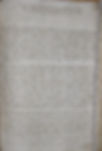Fr Andrew White Arrives in Maryland
- Mary Allen
- Mar 25, 2019
- 4 min read
Updated: Mar 25, 2022

This year, 25 March marks 385 years since Fr Andrew White and his companions landed on St Clement’s Island on the Potomac River, Maryland. This date marks the birth of the colony of the Province of Maryland and the anniversary is celebrated annually state-wide as Maryland Day.
White was born in London in 1579 and began his formal education at 14 at the English College at Douai. He entered the English seminary in Valladolid, Spain, in 1595, and was ordained at Douai in 1605. He returned to England after his ordination but was caught up in the wave of anti-Catholic arrests after the Gunpowder Plot, and was banished from England. Moving to Leuven in Belgium, he joined the Society of Jesus 1 February 1607. He became prefect of the seminaries at Louvain and Liège, and from 1609 split his time between these and preaching in the English mission, despite the threat of arrest.
White’s connection to Maryland can be traced back to 1625, when he is credited with helping convert Sir George Calvert, the first Baron Baltimore, to Catholicism. Calvert wanted to create a haven for English Catholics in the New World. In 1629, Superior General Mutio Vitelleschi wrote to White approving a mission to America. George Calvert died in 1632 but his son, Cecilius Calvert, second Baron Baltimore, continued the programme of his father, hoping that White would help found a new colony in the northern Chesapeake Bay.
White accepted the offer and on 22 November 1633 he set sail from Cowes on the Isle of Wight with fellow Jesuits John Altham Gravenor and Thomas Gervase, attracting artillery salutes from Yarmouth and Hurst Castles as they passed. They reached Maryland four months later on the Feast of the Annunciation, celebrating the first Mass “ever offered up in this part of the world.” White spent most of the next decade in St Mary's City, working on English-Native American relations, particularly with the Yaocomico tribe, wrote dictionaries and translated the catechism into the native languages. In 1637 they were joined by Frs Thomas Copley and Ferdinand Poulton SJ, and between 1634 and1650 there averaged four permanent Jesuits in the Maryland Provincial Colony.

In 1644, Puritan colonists from the neighbouring colony of Jamestown raided the colonial capital, St Mary’s City, burnt it down and took control of the Province. White was arrested and taken back to London and tried for returning to England after being banished nearly 40 years earlier. He escaped the death penalty by arguing that his return was not of his own free will, and lived out the last years of his life quietly in England until his death, 27 December 1656.
Unfortunately, there is little trace of Fr White in the archives, however accounts of his life can be found in secondary sources in our reference library. Rev William P Treacy’s 1889 work Old Catholic Maryland and its Early Jesuit Missionaries quotes extensively from White’s narrative of his voyage and other contemporary sources, providing a vivid account of the early missionaries. In volume 3 of the British Jesuit Br Henry Foley’s Records of the Society of Jesus (1878) is a history of the Colony of Maryland, a detailed biography of Fr White, and the entire text of his Narrative of a voyage to Maryland, which is taken from the Annual Letters of the English Province, housed in the Jesuit Archives in Rome. The narrative includes accounts of plotting sailors, a race with a merchant ship on its way to Angola, a storm, and “many curious objects, especially flying fish, which sometimes swim in the sea, and sometimes fly up in the air.” He also writes of the exotic fruit, which are readily found in supermarkets today but would have been rare if not totally unknown to White, that he encounters in the Caribbean: oranges, lemons, pomegranates, guava, and especially the pineapple of which he writes to Father General, “I wish I could send your paternity a specimen with this letter. For nothing but the thing itself can give you an idea of its excellence.” The account continues to the point of their landing in Maryland and the month following.

Further documents relating to Maryland can be found in Anglia volume IV, including The Charter of Maryland, granted by Charles I in 20 June 1632 to the 2nd Baron Baltimore for a proprietary colony of about twelve million acres, a list of points from Lord Baltimore that were accepted by the English provincial before Jesuits were sent to the Maryland mission, and Lord Baltimore’s draft of a Jesuit assignment, probably written in 1642.
If you are interested in the history of the Maryland Mission, please also see our previous blog post on John Carroll SJ, a later missionary in the Maryland Province who became the first bishop of the United States. A volume of correspondence relating to the establishment of the Maryland Province and the activities of the early missionaries between 1772 and 1835 (ref. MSB/38) has been digitised and we hope that it will soon be available online. In the meantime, if you are interested in any of the material mentioned in this blog post, or in the work of the Archives in general, please contact us.




